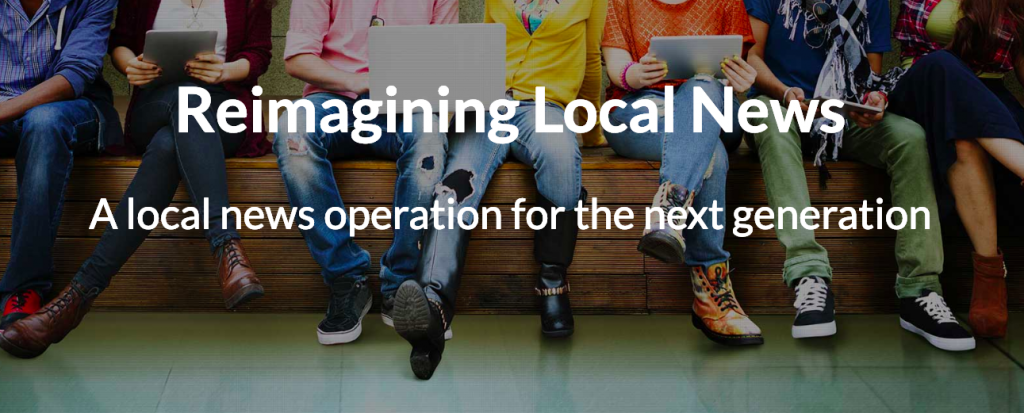
The last thing we need these days is another reminder of the rocky economics of innovation in digital news, but we just got one. Spirited Media, a digital-native local news pioneer, announced that it has sold Denverite, its site in, yes, Denver, to Colorado Public Radio. The company is talking to potential buyers about Billy Penn and The Incline, its sites in Philadelphia and Pittsburgh respectively, as well. Spirited Media’s leaders say the sites were making “a ton of progress,” says CEO and founder Jim Brady, with a model increasingly focused on membership and events, but the company couldn’t raise the next round of investment it felt it needed to “get over the hump.”
Spirited Media’s “pivot” may not seem encouraging for newsrooms trying to figure out how to reach new consumers on digital platforms and get paid enough to do it, but, paradoxically perhaps, it’s also a positive lesson for local TV stations. Who says so? None other than Jim Brady himself. “Local television stations, in my opinion, are perfectly positioned to be the dominant players in their market.” Brady, a battle-hardened veteran of multiple startups in the digital news arena, is now focusing his company’s growing consulting business on — wait for it — local broadcast news, with Graham Media Group as one of his first clients.
Why does Brady like local TV’s chances to dominate digital? One obvious reason is that “television stations still have money,” he says, but “you have to attack it now while you have the resources and the ability to experiment with it a little bit.” Local TV newsrooms “should start moving into some of those places that the newspapers are ceding because of their economic problems. But that requires doing something different than they might do on air.”
Television’s power to promote is another unique asset. “When somebody says something on air, the website often gets traffic right away,” says Brady. “It’s a great promotional opportunity that a lot of newspapers would die for.”
But most importantly, television news enjoys what Brady calls an “emotional relationship” with its viewers based on history in the market and familiarity with the anchors and the rest of the on-air team. That should translate well to digital journalism. “I think younger news consumers want to consume brands they feel like they have a connection with, and television stations have had a connection with their audience for a really long time. Taking advantage of that is really important.”

So how should you take advantage of that? Brady starts with these five recommendations.
Invest in more original digital content. “The story mix has to change” to attract users who don’t necessarily watch television or care about the typical broadcast story. “What do the people who are coming to this website want right now?” asks Brady. “It’s hard to believe that they’re looking for what led the 11 o’clock broadcast” last night. If you agree, that means changing your workflow to devote more resources to digital journalism, rather than merely repurposing your TV stories for digital, which many stations still do reflexively.
Deepen the viewer’s connection with the on-air team. “They feel like they know them already. So why not use digital platforms to actually get them even closer to what those people do.” Our set of case studies, including our regular Social Media Spotlight feature, includes good examples of on-air people who are doing this well.
Expand your coverage to reflect a broader range of human experiences. A really good digital experience encompasses “the full range of human emotion,” says Brady. “Sometimes it makes you pissed; sometimes it makes you laugh; sometimes it makes you cry. And I think local television often has a lot of stories that make you cry or pissed. It’s missing a little bit of the humor and a little bit of the softer side of the places that they cover.”
Invest in stories with lasting appeal. In an on-demand world, choosing stories with a longer shelf life than the typical “breaking news” TV lead helps justify your investment in new digital content. Check out our own Frank Mungeam’s argument for this in The Future of News is On Demand as well as his essay Why Local TV News Is Our Best Hope to Save Democracy.
Focus on quality rather than volume. As many digital-native players are learning the hard way, chasing clicks doesn’t guarantee engagement or sustainability. “The answer to having a better digital site is to do less and do it better,” says Brady. “Pick your spots and do good work.”
Refreshingly, Brady rejects the already-tired cliche of “digital first” and acknowledges the obvious reality that the television broadcast still drives the engine. “Nobody is suggesting that you should be ‘digital first.’ You have a broadcast that starts at a very specific time. Of course, you have to build your day around those. But you should be digital the rest of the time. You should not be ‘digital first’ but ‘digital always.’”
Of course, if attracting new and younger consumers on digital platforms was simple, you wouldn’t be reading this, partly because the Knight-Cronkite News Lab wouldn’t exist. And neither would Brady’s consulting practice. But perhaps the challenges of creating a digital business from scratch offer an opportunity to build on what television news already does so well. Spirited Media’s tagline points to the task ahead: Reimagining Local News.
Do you have examples of original digital journalism to share? Let us know at cronkitenewslab@asu.edu.